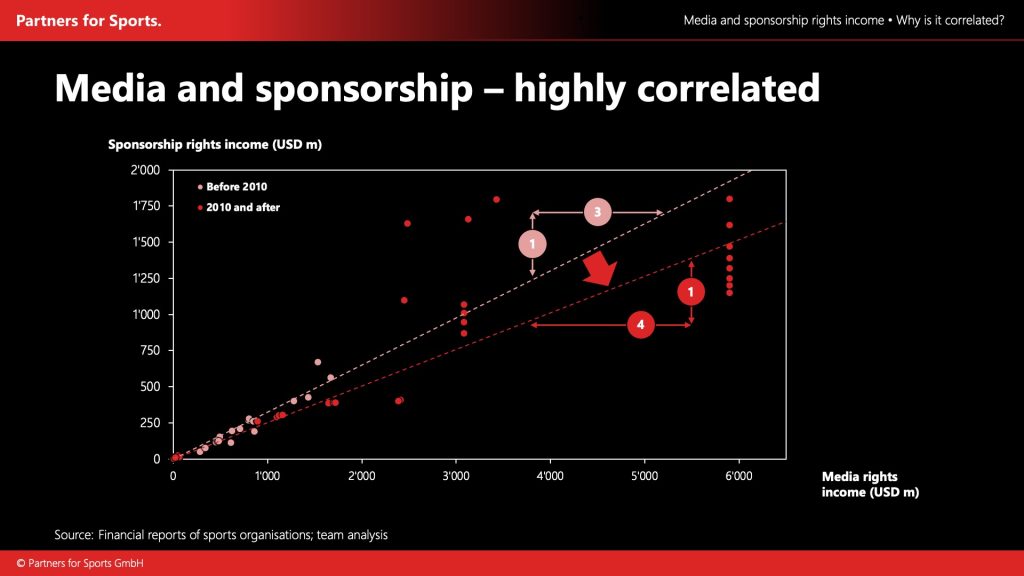With its global appeal and massive fan base, the sports industry has always been a lucrative domain for revenue generation. Two primary revenue streams that have consistently dominated the financial landscape of sports are media rights and sponsorship deals. As the industry evolves, understanding the relationship between these two pillars becomes crucial for stakeholders aiming to navigate the changing tides of sports economics.

A Look Back: Before 2010
In the years leading up to 2010, sports organizations were already reaping the benefits of expansive media coverage. Broadcasting rights for major events were in high demand, ensuring a steady flow of media income. This widespread visibility was a beacon for sponsors. Brands were eager to align themselves with popular sports events, leading to robust sponsorship deals. Data from this era (Fig. 1) reveals a strong positive correlation of approximately 0.974 between media and sponsorship income. This suggests a near-linear relationship: as media income rose, so did sponsorship revenue, and at a rate of about 0.335 units of sponsorship income for every unit increase in media income.
The Digital Shift: Post-2010
The advent of the digital age brought with it a plethora of new media platforms. Streaming services, on-demand content, and social media integrations became the new norm. While this expanded the avenues for media income, it also introduced a more complex landscape for sponsors. Personalized advertising, data-driven campaigns, and interactive brand engagements became pivotal. The correlation between media and sponsorship income in this period was approximately 0.868, still positive but slightly weaker than before. The rate of increase in sponsorship income for a given rise in media income also saw a dip, with a slope of about 0.225.
Decoding the Dynamics
The strong correlation in the pre-2010 era underscores a simpler time in sports economics. Media coverage directly translated to visibility, making events attractive for sponsors. The post-2010 landscape, while maintaining a positive correlation, reflects the complexities introduced by digital media. The reduced slope suggests that while media income continued to be a significant driver for sponsorship deals, other factors, possibly the quality of engagement, brand alignment, or digital reach, began playing a more substantial role in determining sponsorship value.
In Conclusion
TThe relationship between media and sponsorship income in sports mirrors the industry’s evolution. While the foundational principle remains – visibility drives value – the mechanisms and nuances have become more intricate. For sports organizations and sponsors alike, understanding this interplay is about recognizing past patterns and anticipating future trends in an industry that continues to reinvent itself.